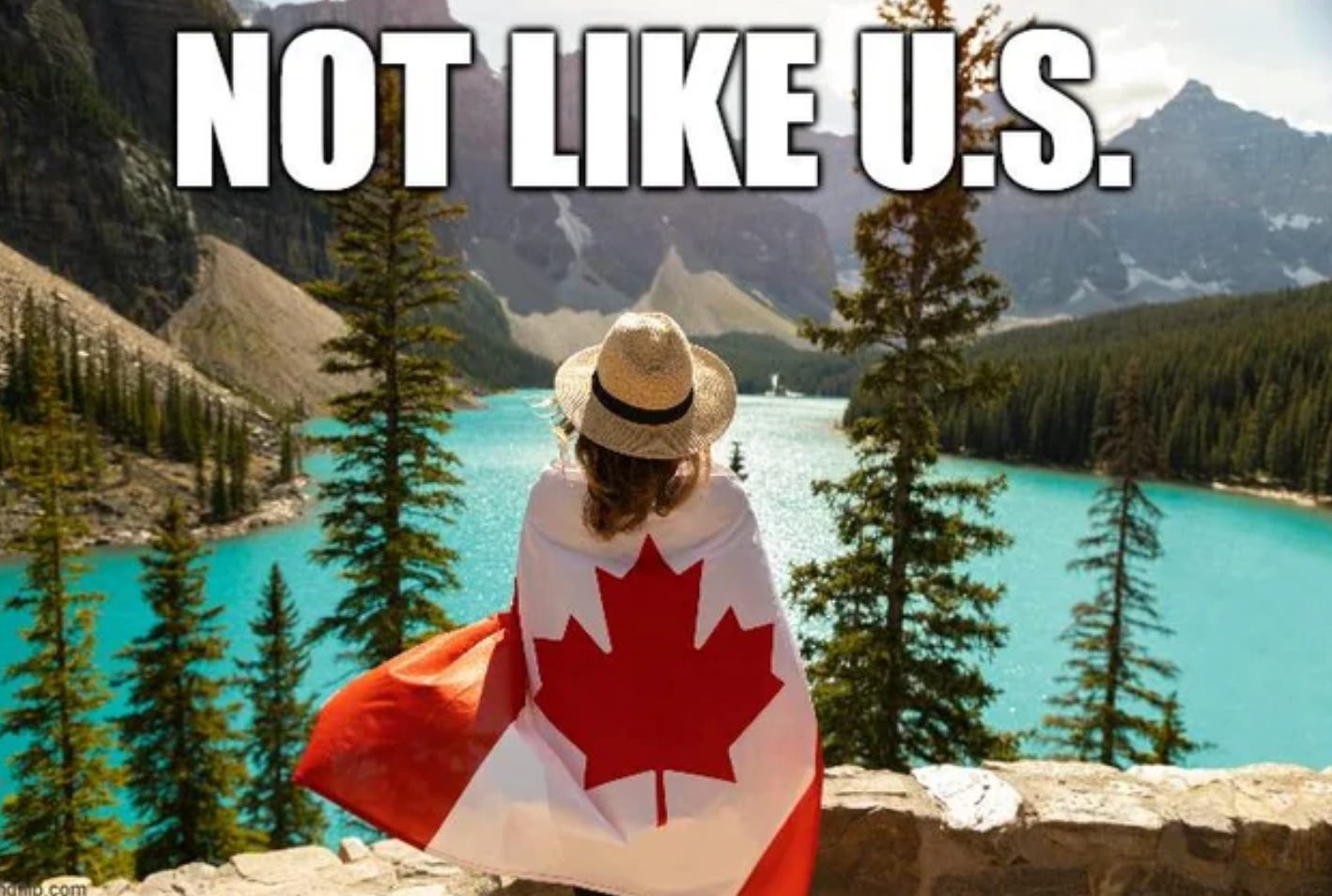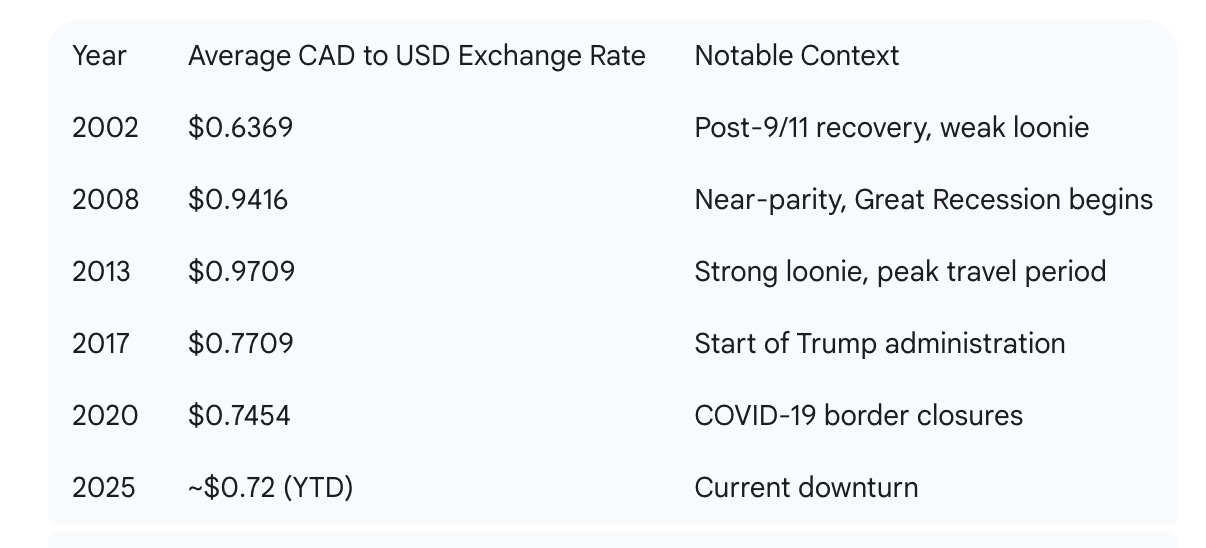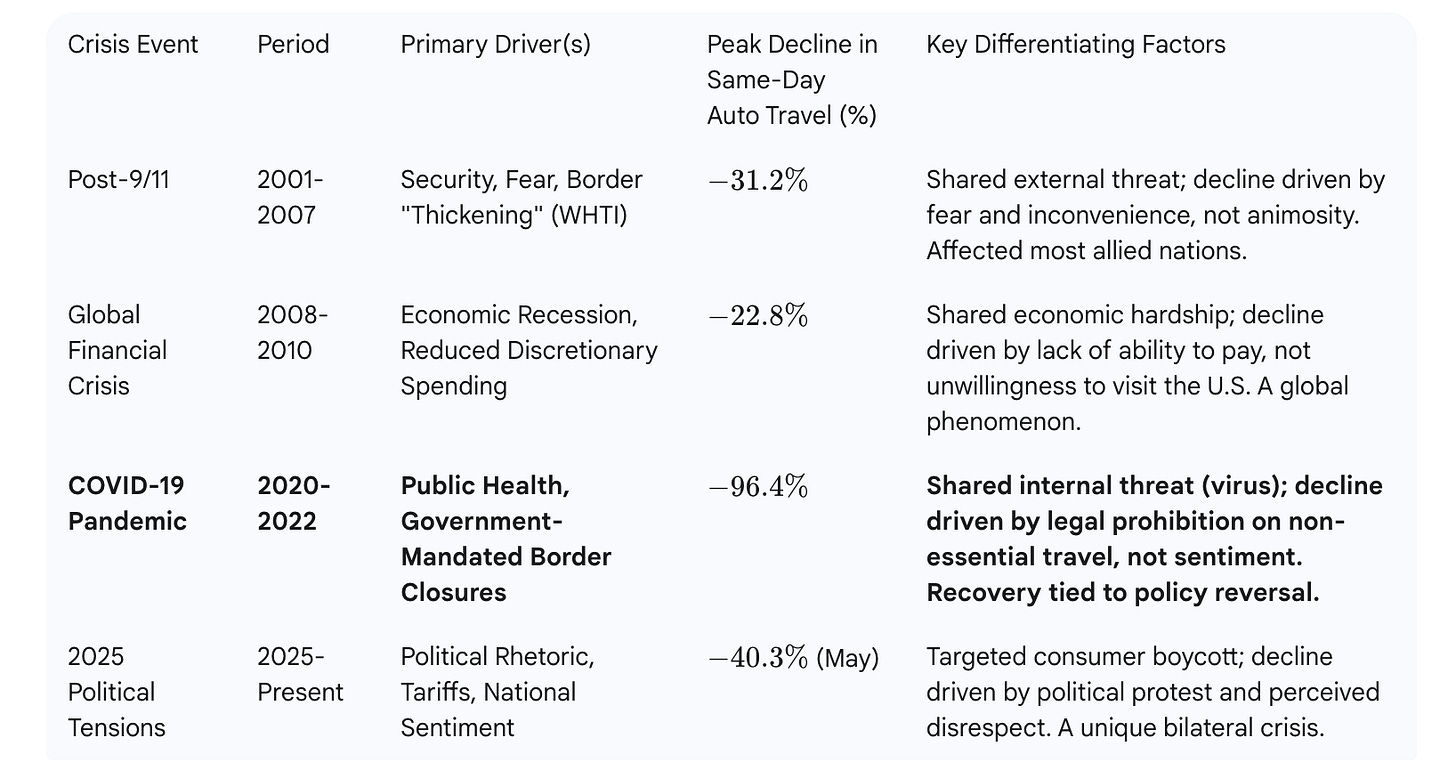Canadian Travel to the U.S. Plunges Deeper Than Post-9/11 Era
A weak Canadian dollar has always meant a quieter season of Canadian visitation. But the latest figures reveal a downturn so bad that only the COVID-19 pandemic was worse.
For generations, Vermonters have understood the rhythm of Canadian tourism like the changing of the seasons. A strong loonie meant busy parking lots at the University Mall and brisk business at ski resorts. A weak Canadian dollar meant a quieter season, a predictable ebb in the cross-border flow. But the latest figures reveal a downturn so severe it has surpassed the economic shocks of the Great Recession and even the travel paralysis that followed the September 11th attacks, pointing to a crisis driven by more than just economics.
According to the most recent data released by Statistics Canada, the decline in Canadian travel to the United States has reached staggering levels. In May 2025, the number of Canadian residents returning by car from a same-day trip to the U.S. plummeted by 38.1% compared to the same month last year. This isn't a slow leak; it's a hemorrhage. While much of the national conversation has centered on the current administration's tariffs and often-hostile rhetoric towards Canada, a deep dive into historical data reveals that while economics are always a factor, the current political climate has created an unprecedented chill.
The Enduring Power of the Loonie
Historically, the single most reliable indicator for Canadian travel south of the 49th parallel has been the strength of the Canadian dollar, or "loonie," against the U.S. dollar. When the currencies approach parity, as they did in the late 2000s, Vermont feels like an extension of the Eastern Townships. When the loonie is weak, as it was in the early 2000s, the cost of a Vermont vacation for a Canadian family can become prohibitive.
A look at the exchange rate over the past several decades shows a clear correlation. For instance, according to data from the Federal Reserve and the Bank of Canada, the Canadian dollar languished in the low to mid-60s against the U.S. dollar in the late 1990s and early 2000s, a period of correspondingly low Canadian tourism. When it soared to parity and briefly surpassed the greenback between 2007 and 2011, Canadian spending in the U.S. hit record highs.
Source: Federal Reserve, Bank of Canada
For years, Vermont's tourism industry has developed a playbook to counter a weak loonie. Ski resorts like Jay Peak, Bolton Valley, and Smugglers' Notch have famously offered "at par" deals on lift tickets and lodging, effectively giving Canadians a 25-30% discount to erase the exchange rate disadvantage. More recently, the Vermont Agency of Commerce and Community Development launched the "Neighbor Pass," offering discounts to Quebec and Ontario residents. These efforts underscore a long-held understanding: Vermont needs, and wants, Canadian business.
Benchmarking Against Past Crises
While the exchange rate sets the baseline, major events have historically caused sharp, temporary shocks to the system. The two most significant in recent memory were the 9/11 terrorist attacks and the 2008 global financial crisis. The current downturn is now demonstrably worse.
Source: Analysis of data from Statistics Canada and the U.S. National Travel and Tourism Office
After September 11, 2001, the world changed. The border hardened, and fear curtailed travel. Statistics Canada noted a 31.2% plunge in same-day auto travel in the year that followed. Similarly, the 2008 financial crisis, which hammered both economies, saw Canadian spending in the U.S. drop by 15% year-over-year. Another significant factor was the Western Hemisphere Travel Initiative (WHTI), which began requiring passports at the land border in 2009. The Conference Board of Canada estimated WHTI alone cost the Canadian tourism industry millions of visits.
Each of these events was a body blow to tourism. Yet, the industry adapted and travel eventually recovered as fear subsided, economies improved, and travelers grew accustomed to new rules.
Why This Time Is Different
The current situation is unique. The exchange rate, while unfavorable for Canadians, is not at a historic low. It has been worse before. The primary difference, according to numerous reports and surveys, is political. A 2024 poll cited by multiple Canadian news outlets found that a significant percentage of Canadians were reconsidering travel to the U.S. due to the political climate and a feeling of being unwelcome.
Unlike the aftermath of 9/11, which was driven by a shared sense of shock and a focus on security, or the 2008 recession, which was a purely economic event, the current downturn is compounded by a "sentiment shock." It appears that for a growing number of our northern neighbors, a trip to the U.S. is no longer seen as a friendly getaway, but a fraught decision.
For Vermont, which shares not only a border but a deep cultural and economic bond with Quebec, the implications are profound. The challenge is no longer just about overcoming an unfavorable exchange rate with clever marketing. The data suggests that until the political relationship between the two nations is repaired, Vermont's cash registers and parking lots may remain distressingly quiet, marking a new and troubling chapter in our long history with our most important neighbors.




